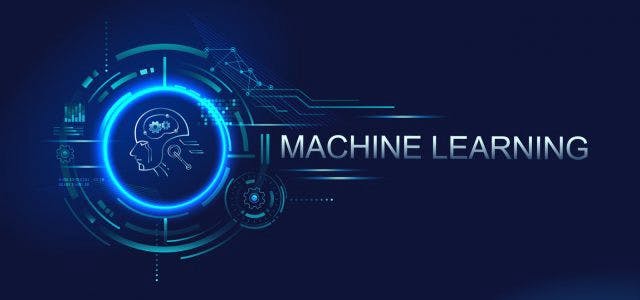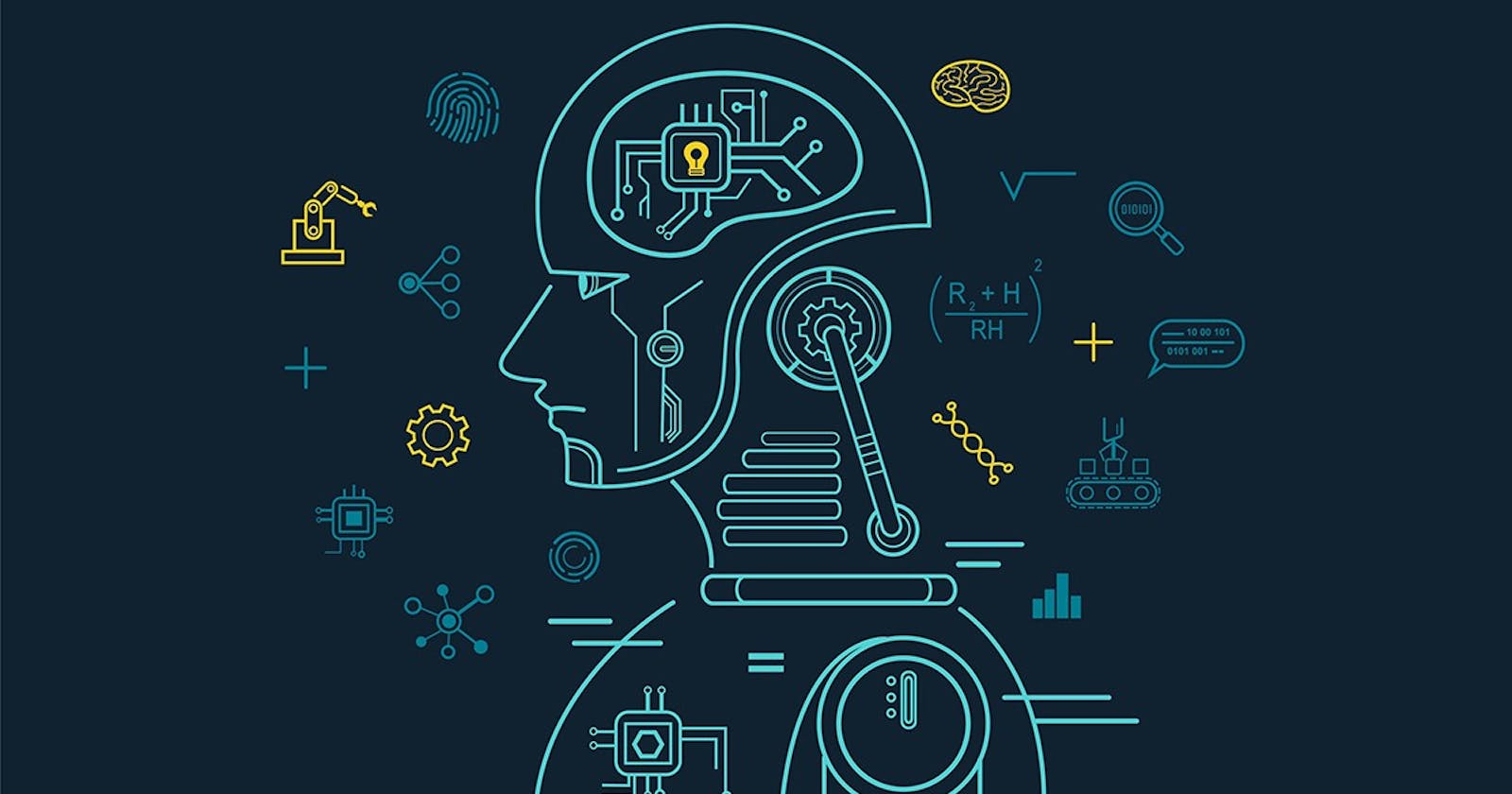"Machine learning is the science of getting computers to act without being explicitly programmed."
Machine Learning has become one of the most important tools in the world of technology. It allows us to make predictions and decisions based on data, and its applications are endless. Whether you are a beginner just starting out or an experienced practitioner, this blog is for you. In this blog, we will explore the basics of machine learning, share some tips and tricks, and offer insights into my own experience with the field.
🫂Understanding Machine Learning?
Machine learning is a subset of artificial intelligence that enables computers to learn from data. It is based on the idea that a computer can learn how to perform a task without being explicitly programmed.
It uses algorithms to analyze data and make predictions or decisions based on that data. The ultimate goal of machine learning is to automate decision-making processes, improve predictions, and reduce the amount of human error in the process.
The key components of machine learning are data, algorithms, and models. Data is the information that is analyzed, algorithms are the methods used to process the data, and models are the representations of the relationships between the data and algorithms. By understanding these components and the process of machine learning, we can harness the power of AI to make better decisions and predictions.
"Machine learning is like a hammer in your toolbox. It's a powerful tool, but it's not the solution to every problem. You have to know when to use it, and when not to."
📍Importance of Machine Learning
Machine learning is important because it enables computers to automatically improve their performance on a specific task through the experience without being explicitly programmed. This has numerous applications in various fields such as healthcare, finance, and marketing, where it can be used to analyze large amounts of data, make predictions, and identify patterns, leading to more efficient and effective decision-making. Additionally, it also has the potential to revolutionize industries and create new ones, leading to economic growth and job opportunities.
🛣My Experience with Machine Learning
I have been working with machine learning for the past 2 years now and it has been an amazing experience. I have worked on a variety of projects, ranging from image recognition to natural language processing. One of the things I love about machine learning is that it is always evolving. There is always something new to learn, and the field is constantly growing and changing.
The importance of data quality
One of the biggest lessons I have learned is the importance of data quality. Machine learning algorithms are only as good as the data they are trained on. It is crucial to ensure that the data is accurate, complete, and relevant to the task at hand. I have seen firsthand the impact that poor data quality can have on the performance of machine learning models.
The power of feature engineering
Another important aspect of machine learning is feature engineering, which involves selecting and transforming the variables used as inputs to the model. Feature engineering can have a significant impact on the performance of the model, and it is an area where creativity and experimentation can be particularly valuable.
The need for robust validation
In order to ensure that a machine learning model is accurate and reliable, it is important to perform rigorous validation. This involves dividing the data into training and testing sets, and using the testing data to evaluate the performance of the model. I have found that it is important to be mindful of potential sources of bias and to use a variety of validation techniques to get a comprehensive understanding of the model's strengths and weaknesses.
The value of ensemble methods
One of the best practices I have discovered in my work with machine learning is the use of ensemble methods. This involves combining the predictions of multiple models to create a more accurate overall prediction. I have found that ensemble methods can be especially effective in situations where individual models may have limited accuracy, but where the combination of models can produce a more robust result.
"Machine learning is the power behind the intelligent systems that are changing our world, from self-driving cars to Siri and Alexa."
The importance of continual learning💡
Finally, I have learned that machine learning is an iterative process that requires continual learning and experimentation. There is always more to learn about the algorithms, the data, and the task at hand. It is important to be flexible and to be open to new approaches and techniques as they become available.
In conclusion, my journey with machine learning has been both challenging and rewarding. By embracing the importance of data quality, the power of feature engineering, the need for robust validation, the value of ensemble methods, and the importance of continual learning, I have been able to make the most of this exciting technology. I hope that others can benefit from my experiences and find their own path to success with machine learning.
Key Components of Machine Learning
There are three main components to machine learning: data, algorithms, and models. Data is the information that the machine learning algorithms analyze. Algorithms are the methods used to process the data and make predictions. Finally, models are the representations of the relationships between the data and the algorithms. In order for machine learning to work effectively, all three components must work together in harmony.

Tips and Tricks for Effective Machine Learning
Here are some tips and tricks for effective machine learning:
Start with a clear goal in mind: It is important to have a clear understanding of what you want to achieve with machine learning before you start. This will help you determine which algorithm and model to use.
Clean and preprocess your data: The quality of your data will have a major impact on the accuracy of your machine learning models. Make sure to clean and preprocess your data before using it.
Use cross-validation: Cross-validation is a technique used to evaluate the accuracy of your machine-learning models. It involves splitting the data into training and testing sets, training the model on the training set, and evaluating the model on the testing set.
Fine-tune your algorithms: Different algorithms will produce different results. It is important to try out multiple algorithms and fine-tune them to get the best results.
Monitor your models: Finally, it is important to monitor your models and make changes as needed. This will help you improve the accuracy of your predictions over time.
How learn Machine Learning?
Learning Machine Learning (ML) can seem daunting, but with the right resources and approach, it can be an incredibly rewarding experience. Here are some steps to get you started:
Develop a strong foundation in mathematics: ML relies heavily on mathematical concepts such as linear algebra, calculus, and statistics. It's important to have a good understanding of these concepts before diving into ML.
Familiarize yourself with programming: ML algorithms are implemented using programming languages such as Python, R, and Java. Familiarize yourself with one of these languages and start practicing.
Choose a learning path: There are many resources available for learning ML, from online courses and tutorials to books and research papers. Choose a path that suits your learning style and pace.
Practice, practice, practice: ML is a hands-on field, and the best way to learn is by building and experimenting with ML models yourself. Look for online datasets, or create your own, and start building models.
Get involved in the community: Join online forums and discussion groups to connect with other ML practitioners, share your projects and get feedback.
Keep learning: ML is a rapidly evolving field, and it's important to stay up-to-date with new developments and techniques. Regularly attend workshops and conferences, or follow industry leaders and influencers on social media.
Remember, learning ML takes time and patience, but the rewards are well worth it.

🌌Conclusion
In conclusion, machine learning is a rapidly growing and evolving field that offers tremendous potential for improving decision-making and predictions in a wide range of industries and applications. By using the tips and best practices shared in this article, beginners can start on the right foot and avoid common pitfalls. Additionally, it's important to always be learning and adapting to new developments in the field. With dedication and persistence, anyone can become a skilled machine learning practitioner and harness the power of this technology to drive innovation and progress. I hope this article has been informative and inspiring, and I wish you all the best on your machine-learning journey.
🔥Pro tip: Always start with a clear understanding of the problem you're trying to solve. This will help you select the appropriate algorithm and evaluation metric, as well as ensure that your results are meaningful and relevant.

